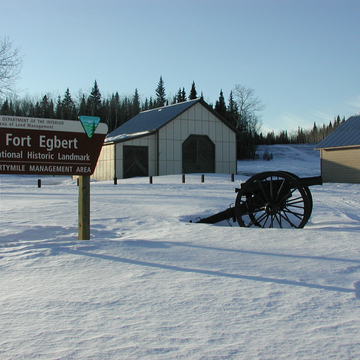By establishing Fort Egbert in 1899, the U.S. Army accomplished several objectives. Serving as a law-enforcement authority in a district that was legally unable to govern itself, the army was charged with keeping the peace in the frenzy of the gold rush, and Fort Egbert was located in the midst of the Canadian and American stampedes. Fort Egbert's location 8 miles from the Canadian border also established an American presence at a critical site. In addition, the army provided the important functions of communications and of transportation. It built a telegraph and a cable line that linked all of its posts with the contiguous United States without going through Canadian territory and constructed the Trans-Alaska Military Road from Valdez to Eagle. Although Fort Egbert flourished for only about ten years, its presence helped Eagle survive as a permanent town.
Although the initial buildings at Fort Egbert were of log, a sawmill was soon constructed and the post began to take on a more finished look. The post eventually had forty-five buildings, arranged in a grid plan around a parade ground and connected by boardwalks. Today only five survive, and the original plan of the fort is obscured by building relocations and the construction of an airstrip at an angle through the site. The five buildings that remain, however, were carefully restored by the Bureau of Land Management in 1974–1979.

